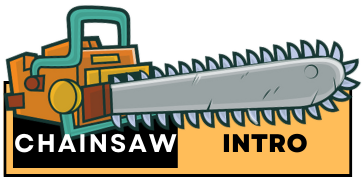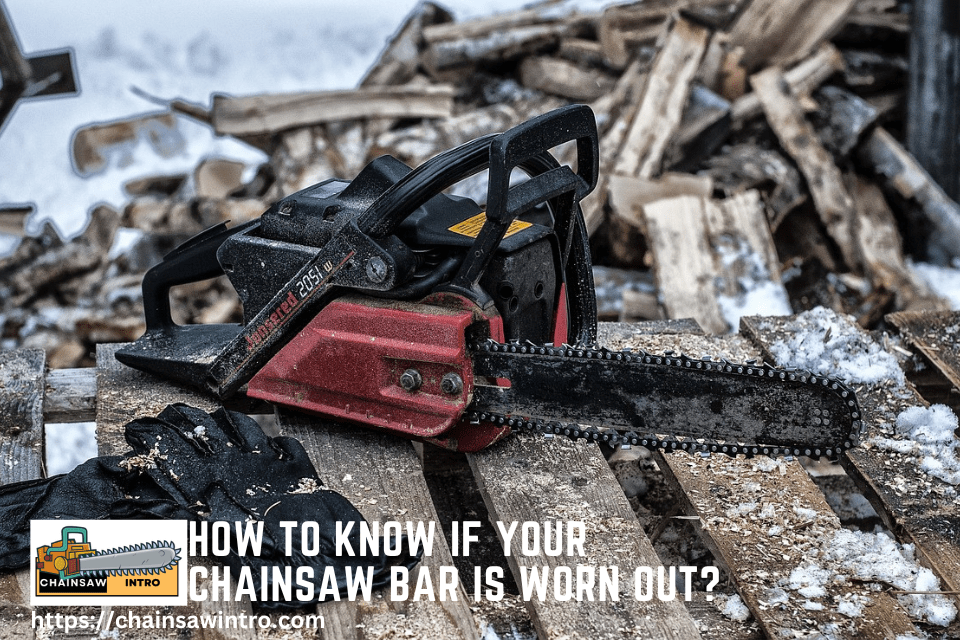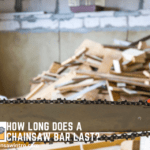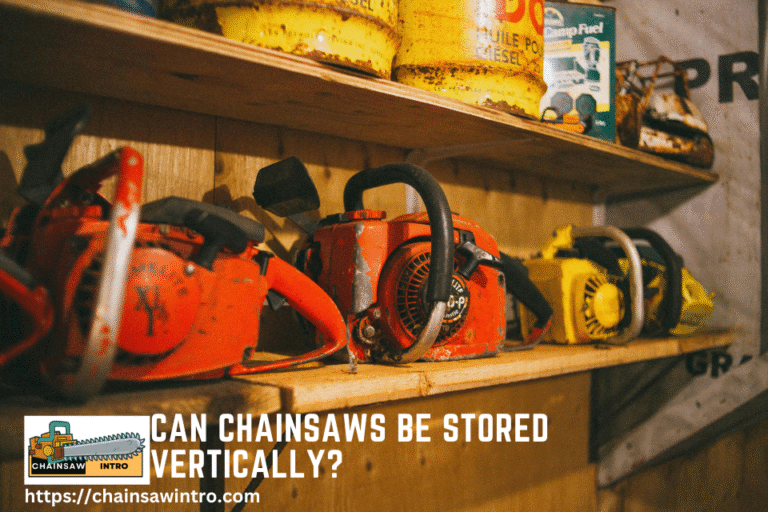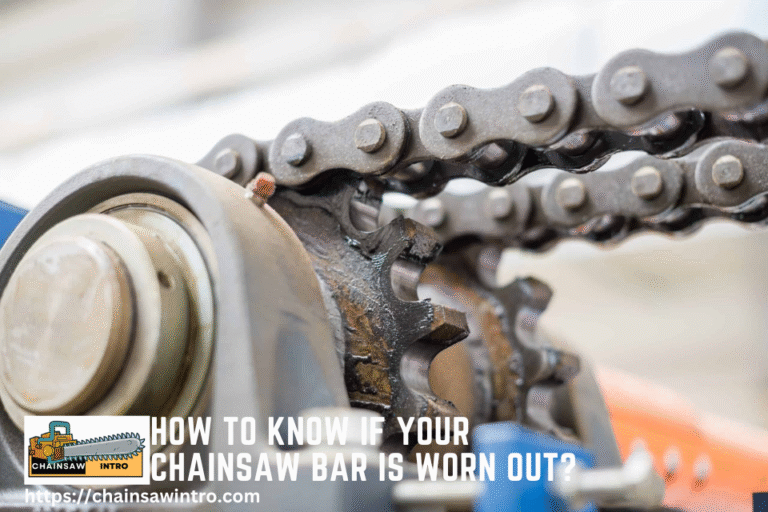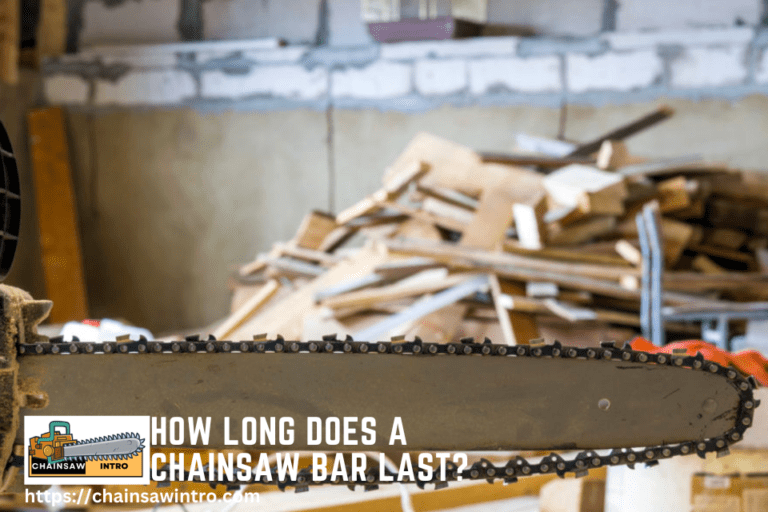A chainsaw is only as good as its bar and chain. While most people focus on sharpening the chain, the chainsaw bar also wears out over time. A damaged or worn bar can affect cutting performance, increase kickback risk, and even shorten the life of your chainsaw. Knowing the signs of wear helps you decide when to replace the bar and maintain your saw’s efficiency and safety.
In this detailed guide, we’ll cover the common signs of a worn chainsaw bar, causes of wear, how to inspect your bar, and when it’s time to replace it.
Why the Chainsaw Bar Matters?
The chainsaw bar guides the chain during cutting. It keeps the chain aligned, prevents wobbling, and ensures smooth, accurate cuts. A bar in good condition allows your chainsaw to cut efficiently with minimal effort. But if the bar is worn out, you’ll notice rough performance, uneven cuts, and added strain on the motor.
Ignoring a worn chainsaw bar can lead to:
- Poor cutting accuracy.
- Faster chain dulling.
- Overheating of the bar and chain.
- Increased chances of kickback and injury.
How Long Does a Chainsaw Bar Last?
On average, a chainsaw bar lasts 5 to 10 years with proper maintenance. However, the actual lifespan depends on:
- Frequency of use – Daily users will replace bars much sooner than occasional users.
- Type of wood – Cutting hardwood wears the bar faster than cutting softwood.
- Maintenance habits – Cleaning, oiling, and flipping the bar extend its life.
- Cutting technique – Forcing the saw, twisting the bar, or hitting the ground can reduce lifespan dramatically.
Signs That Your Chainsaw Bar Is Worn Out
Here are the most common indicators that your chainsaw bar needs replacement:
1. Uneven or Crooked Cuts
If your chainsaw consistently pulls to one side, it’s often a sign of bar rail wear. When one side of the rail wears faster than the other, the chain no longer runs evenly, causing crooked cuts.
2. Excessive Bar Rail Wear
The bar rails hold the chain in place. Over time, they wear down or spread apart. If the groove is too shallow or the rails feel sharp and jagged, the bar is worn.
3. Chain Wiggle in the Groove
A healthy bar keeps the chain snug in its groove. If your chain moves side-to-side excessively, the bar groove has worn out and can no longer guide the chain properly.
4. Burn Marks or Overheating
A bar that’s overheating shows signs of burn marks, discoloration, or a bluish tint. This usually means poor lubrication or excessive friction, both of which damage the bar.
5. Nose Sprocket Problems
Many bars have a sprocket at the nose to help the chain glide smoothly. If this sprocket seizes, feels rough when rotated, or shows missing bearings, the bar is at the end of its life.
6. Visible Cracks or Bends
If your bar is bent, cracked, or chipped, it’s unsafe to use. A bent bar prevents accurate cutting and significantly increases the risk of kickback.
7. Chain Slipping Off Frequently
If the chain keeps derailing despite proper tensioning, the bar groove may be too worn to hold it. This is a major safety hazard and a clear sign the bar needs replacement.
Causes of Chainsaw Bar Wear
Understanding why chainsaw bars wear out helps you prevent premature damage:
- Lack of lubrication – Not using enough bar oil creates excessive friction and heat.
- Cutting dirty wood – Dirt, sand, and grit grind away at the bar rails.
- Improper chain tension – Over-tightened chains strain the bar, while loose chains damage the rails.
- Uneven cutting pressure – Pushing the saw too hard or twisting during cuts wears one side faster.
- Not flipping the bar – Bars should be flipped every few uses to ensure even wear.
How to Inspect Your Chainsaw Bar?
Inspecting your chainsaw bar is a straightforward process that can be done during routine maintenance. Start by powering off the saw and removing the spark plug wire (for gas models) or battery (for electric models) for safety. Remove the chain and bar from the saw, then clean the bar thoroughly with a brush or solvent to remove sawdust, oil, and debris for a clear view.
- Look at the rails – Ensure they are even and not sharp or rolled over.
- Check the groove depth – Insert a chain drive link into the groove. If it sits loosely or doesn’t engage properly, the bar is worn.
- Spin the nose sprocket – Rotate it by hand. It should move smoothly without grinding.
- Check for straightness – Hold the bar against a flat surface to see if it’s bent.
- Inspect oil holes – Clogged holes prevent lubrication, causing premature wear.
When Should You Replace a Chainsaw Bar?
Minor wear, like small burrs, can often be repaired by filing the rails with a flat file at a 45-degree angle to smooth them out. However, replacement is necessary if the bar shows severe wear, such as a groove too shallow to hold the chain, significant uneven rail wear, bends, or cracks. A new bar typically costs $20-$50, making replacement cost-effective compared to risking chain derailment or saw damage. Flipping the bar periodically to distribute wear evenly can delay replacement, potentially extending its life by up to 50%. If you’re replacing multiple chains (3-5) before the bar, you’re likely maintaining it well, but don’t ignore signs of wear to avoid compromising safety.
You should replace your chainsaw bar if:
- The chain wiggles excessively in the groove.
- Cuts are consistently crooked despite a sharp chain.
- Rails are sharp, cracked, or uneven.
- The nose sprocket no longer spins freely.
- The bar is visibly bent or damaged.
Replacing the bar not only improves cutting performance but also extends the life of your chainsaw by reducing stress on the engine and chain.
Tips to Extend Chainsaw Bar Life
Preventing premature wear saves time and money. Here are practical tips to maximize your bar’s longevity:
- Flip the Bar Regularly: Rotate the bar 180 degrees every 1-2 sharpening sessions to ensure even wear on both rails.
- Maintain Proper Chain Tension: Keep the chain snug but not overly tight to reduce rail stress and groove wear.
- Use Adequate Bar Oil: Ensure the oil reservoir is full to minimize friction; low oil accelerates wear and heat buildup.
- Avoid Debris Contact: Elevate logs on a sawbuck to prevent hitting dirt or rocks, which can damage the bar instantly.
- Clean Regularly: Clear sawdust and debris from the bar groove after each session to prevent abrasive wear.
- Store Properly: Keep the bar covered and stored in a dry place to avoid rust, especially after cutting wet wood.
Conclusion: Keep Your Chainsaw Bar in Top Shape
A chainsaw bar is a critical part of your tool, and knowing when it’s worn out keeps both you and your chainsaw safe. Look for signs such as crooked cuts, rail wear, chain wobble, overheating, and nose sprocket issues. With regular maintenance—flipping the bar, keeping the chain sharp, and ensuring proper lubrication—you can extend its life significantly.
When in doubt, replace the bar. A fresh bar improves cutting accuracy, reduces wear on the chain, and ensures your chainsaw runs at its best.
Frequently Asked Question
What are the most common signs of a worn chainsaw bar?
A worn chainsaw bar often shows signs like crooked cuts, uneven bar rails, excessive chain wobble, overheating, or a stuck nose sprocket. Visible cracks or bends are also clear indicators that replacement is needed.
How often should you replace a chainsaw bar?
With proper care, a chainsaw bar can last 5–10 years. However, if you use your chainsaw heavily, cut hardwood often, or notice performance issues, you may need to replace the bar much sooner.
Can I repair a chainsaw bar instead of replacing it?
Minor maintenance like cleaning grooves, filing bar rails, and unclogging oil holes can extend its life. But once the rails are uneven, the groove is too shallow, or the bar is bent, replacement is the only safe option.
How do I check if my chainsaw bar is straight?
Place the bar on a flat surface and check for gaps. If it rocks or shows a visible bend, it’s no longer safe to use.
How can I extend the lifespan of my chainsaw bar?
To make your chainsaw bar last longer, keep the chain sharp, flip the bar regularly, maintain proper chain tension, use quality bar oil, and avoid cutting dirty or sandy wood.
William C. Bozeman is a seasoned chainsaw expert and outdoor power tool enthusiast with over a decade of hands-on experience in tree cutting, forestry, and property maintenance. Having worked with leading chainsaw brands like Stihl, Husqvarna, and Oregon, Bozeman shares practical knowledge, safety tips, and honest reviews to help homeowners, DIYers, and professionals make informed decisions.
